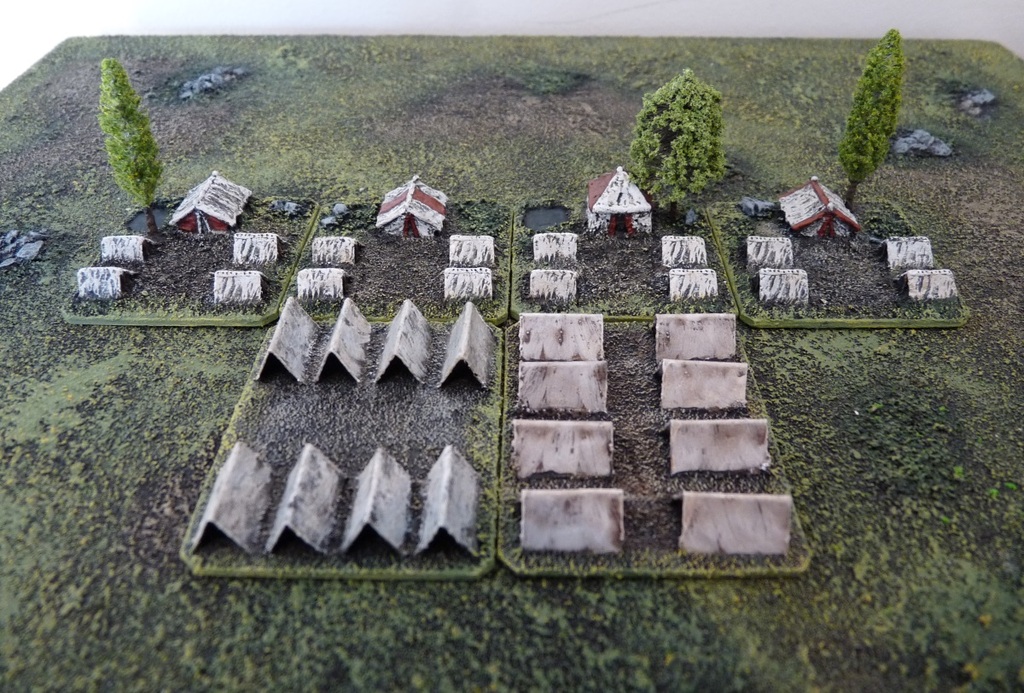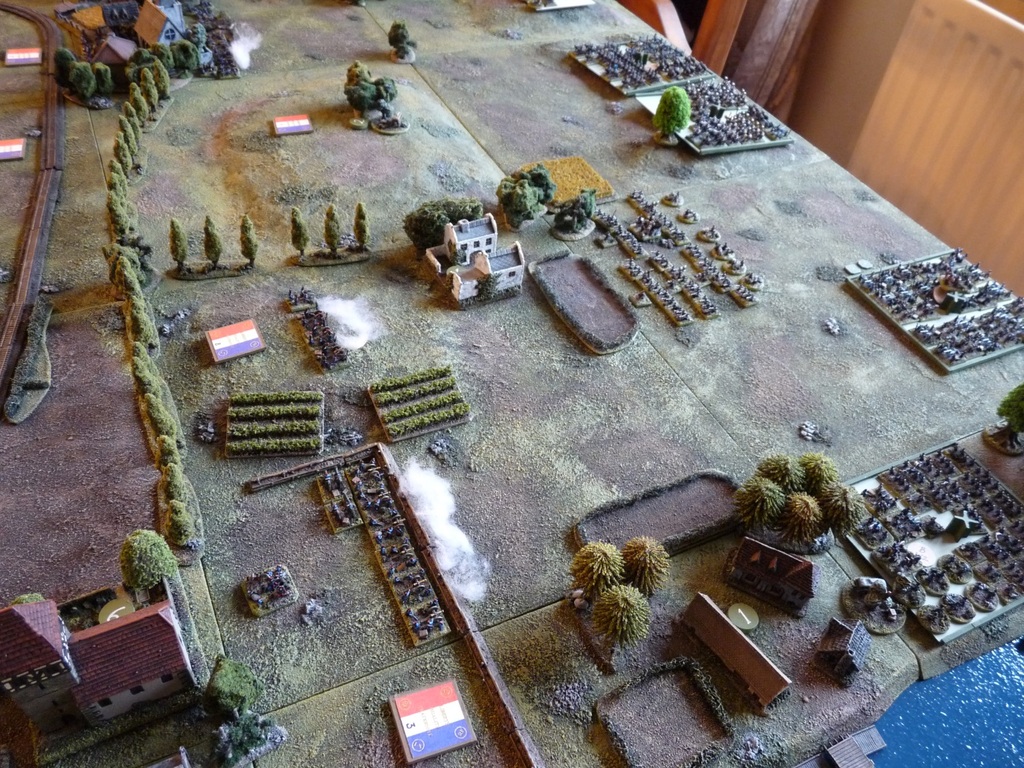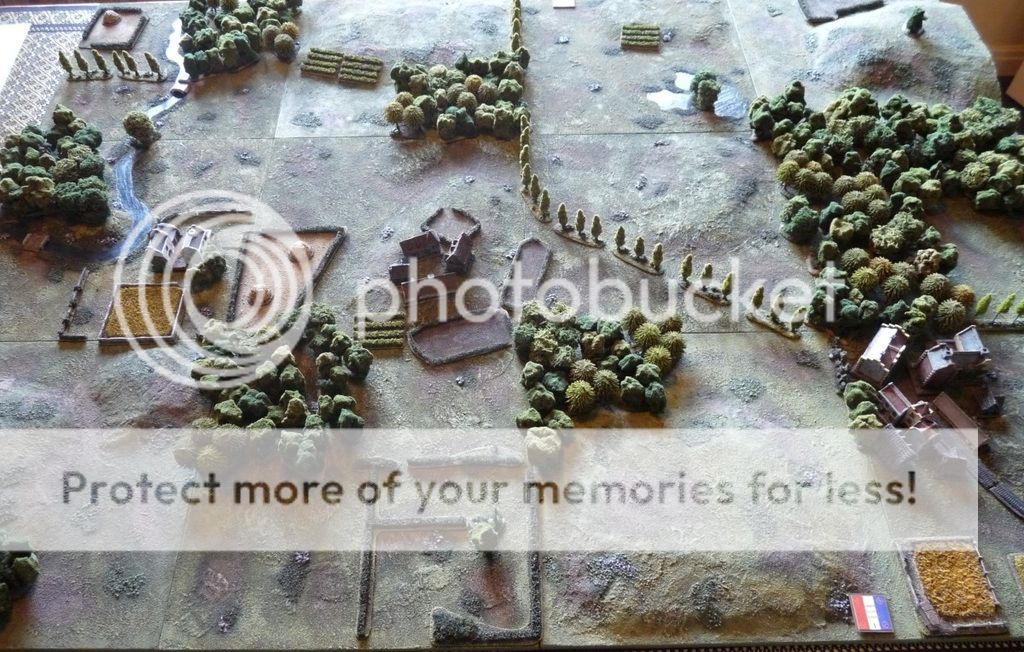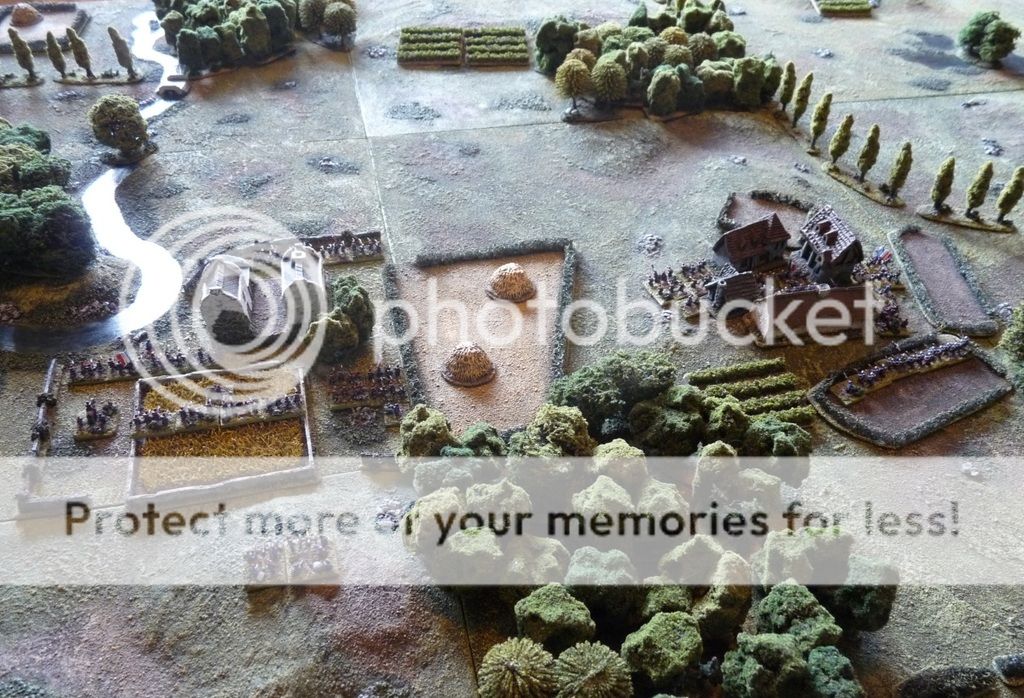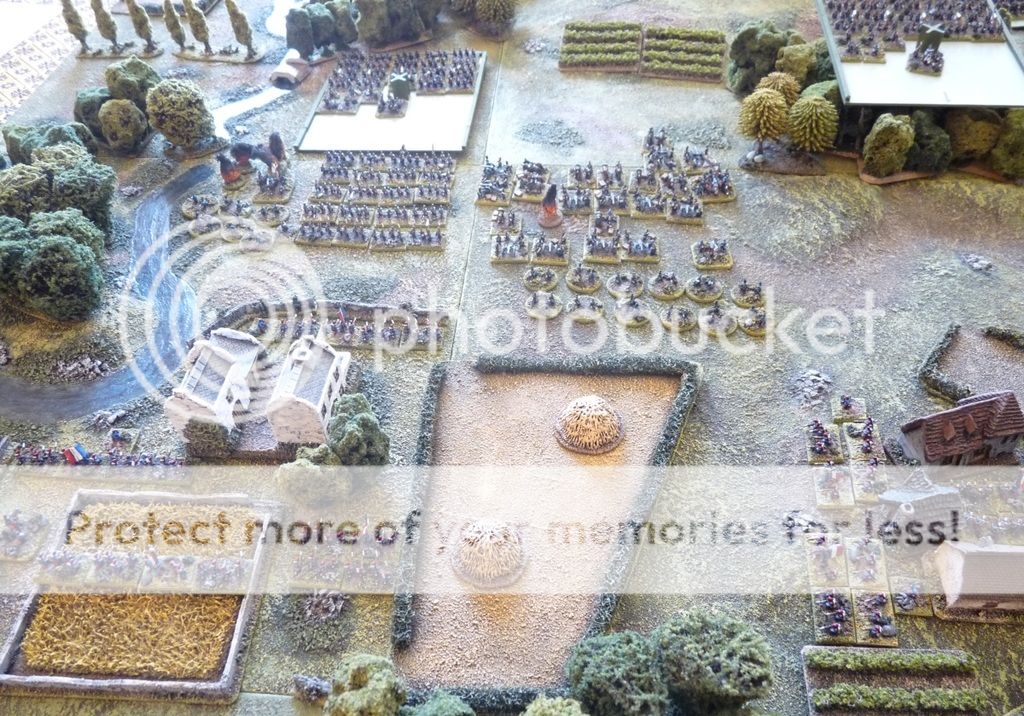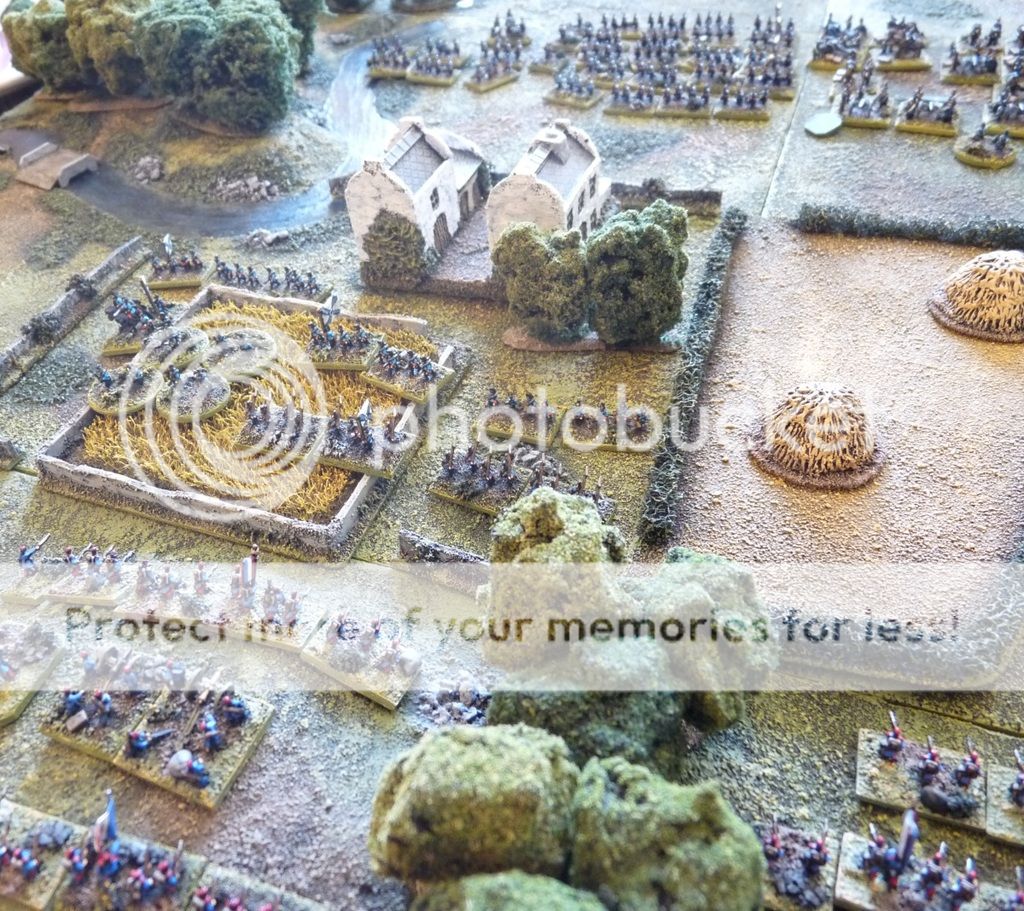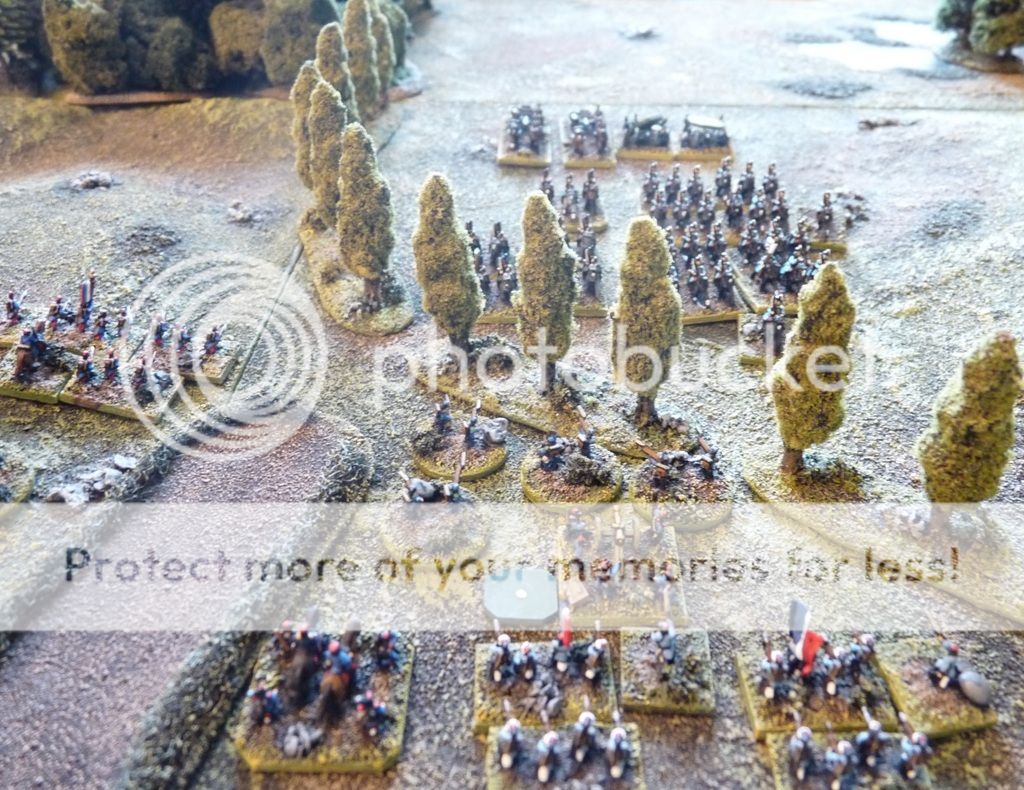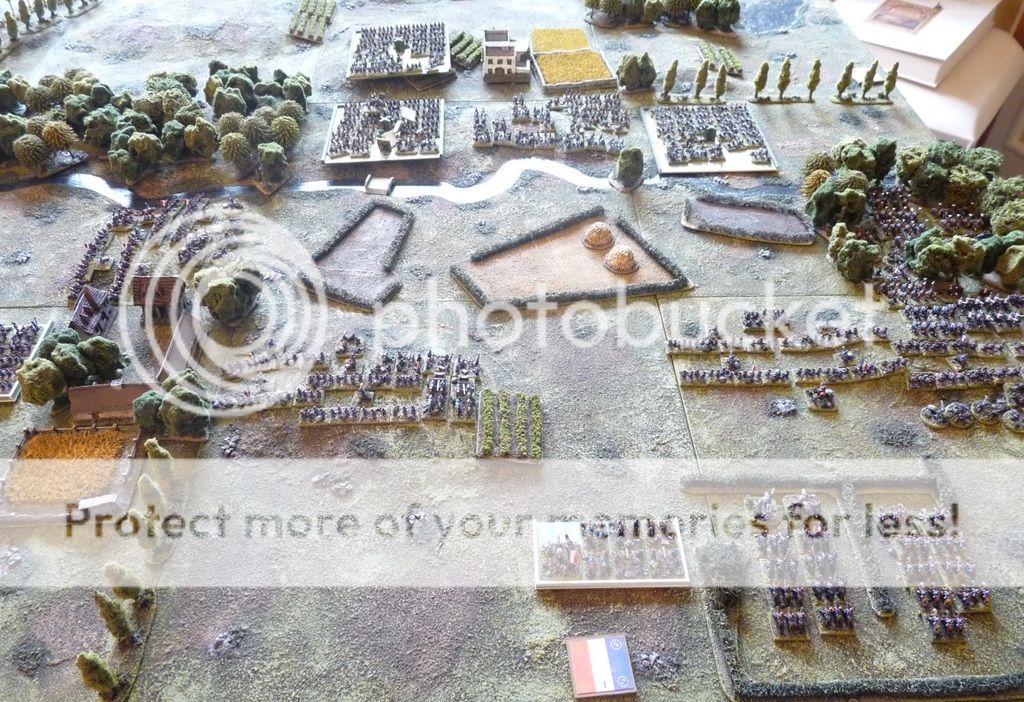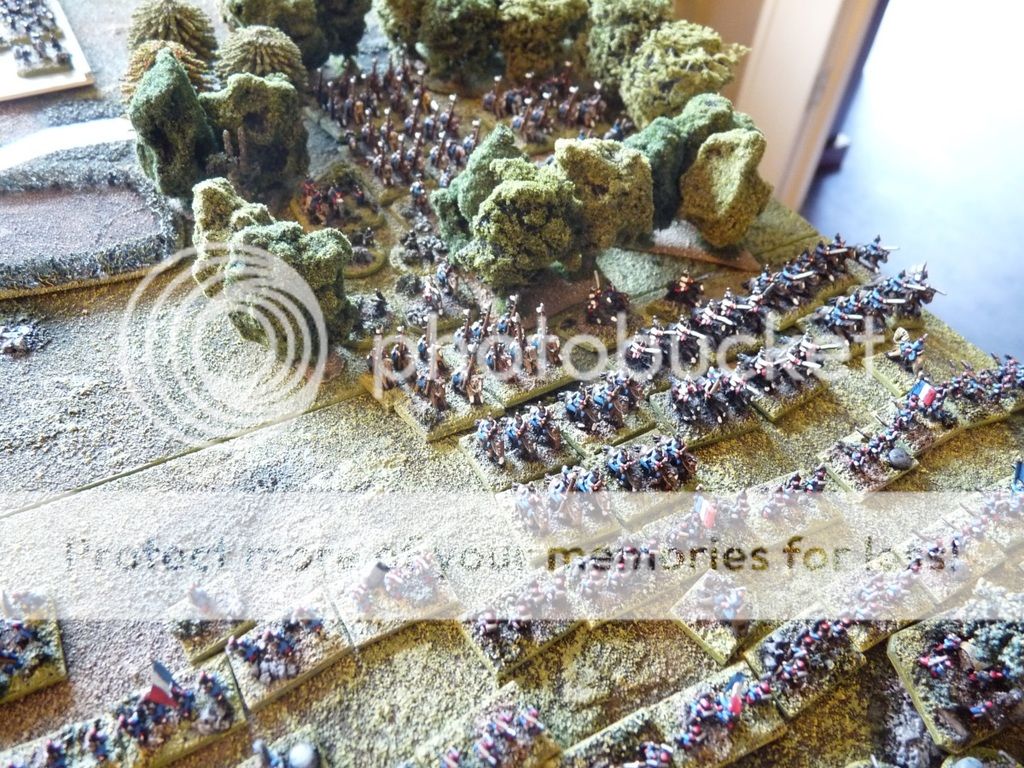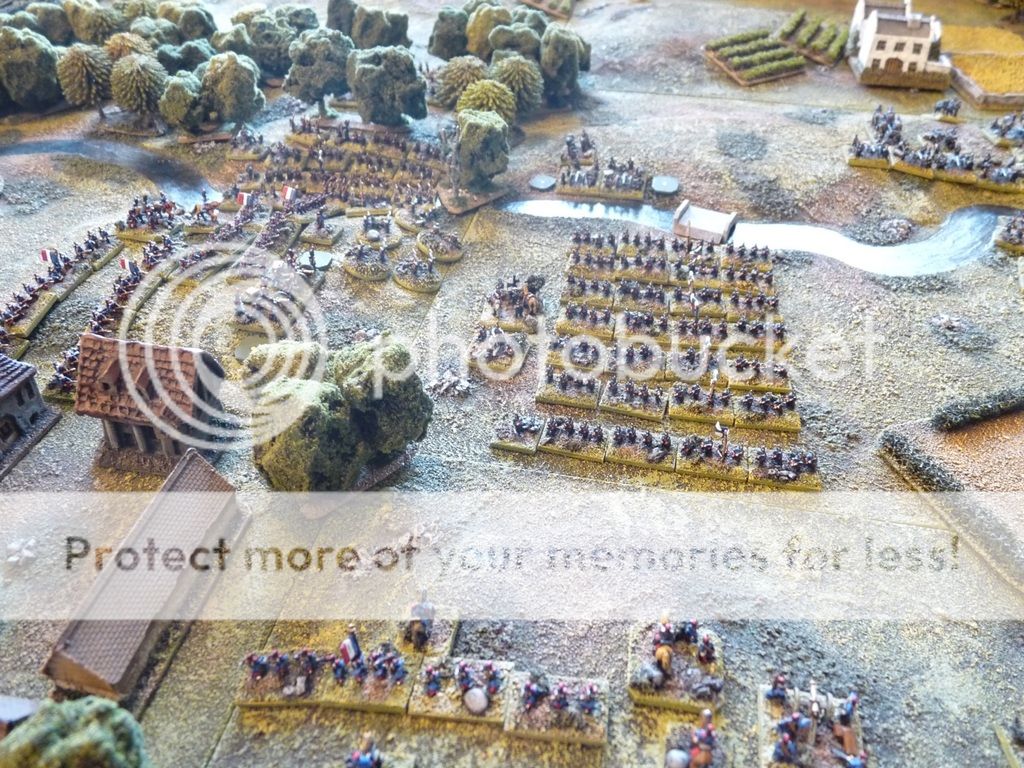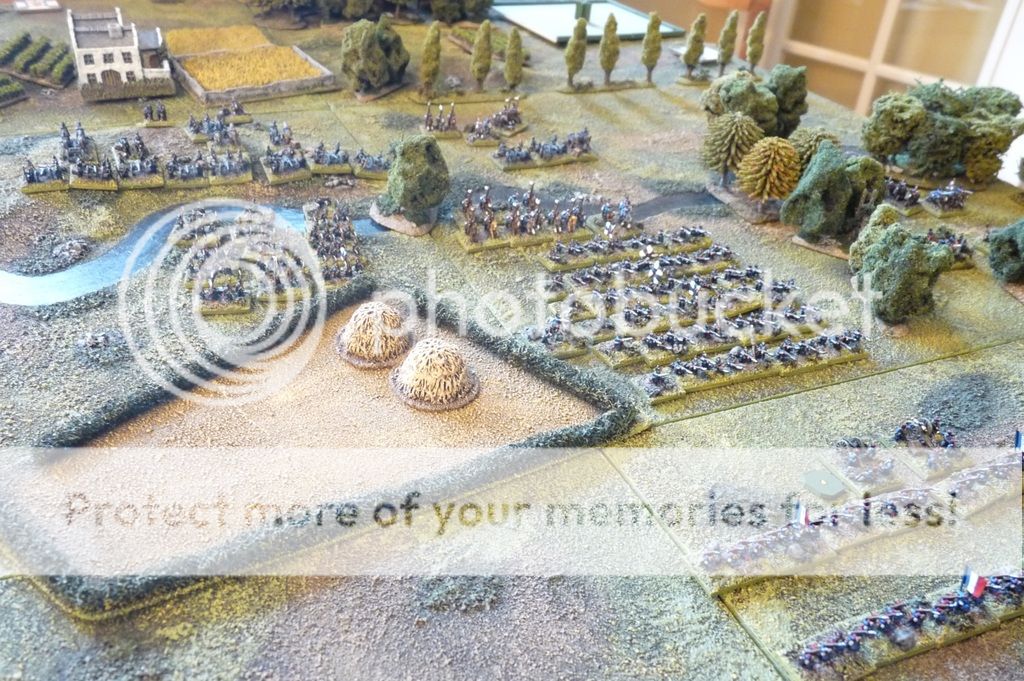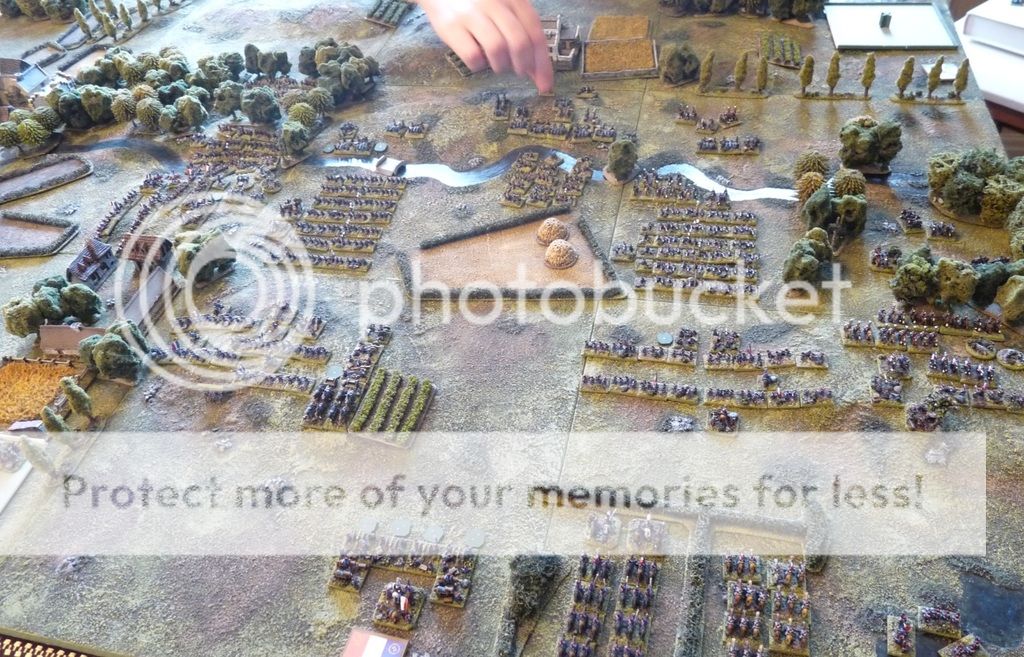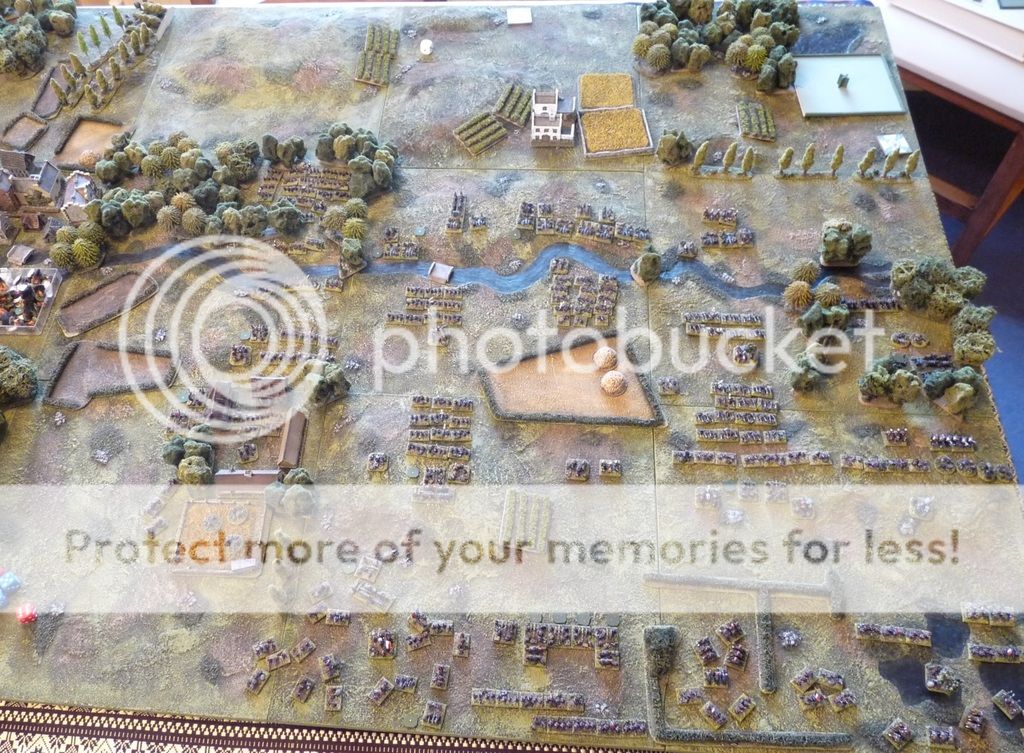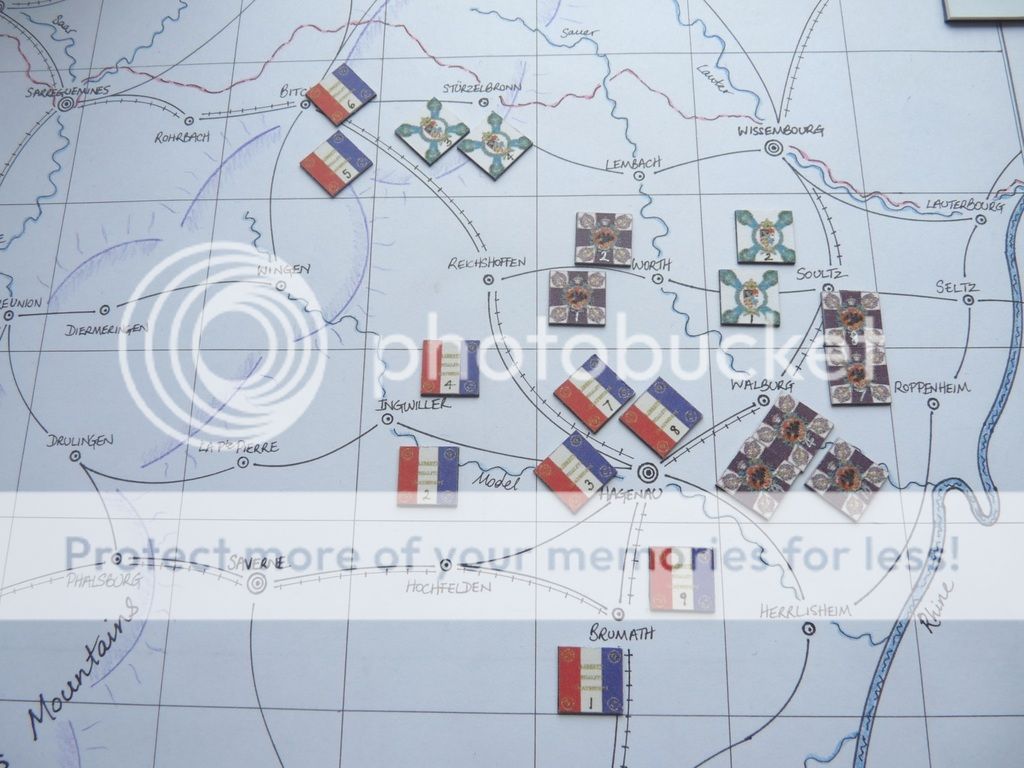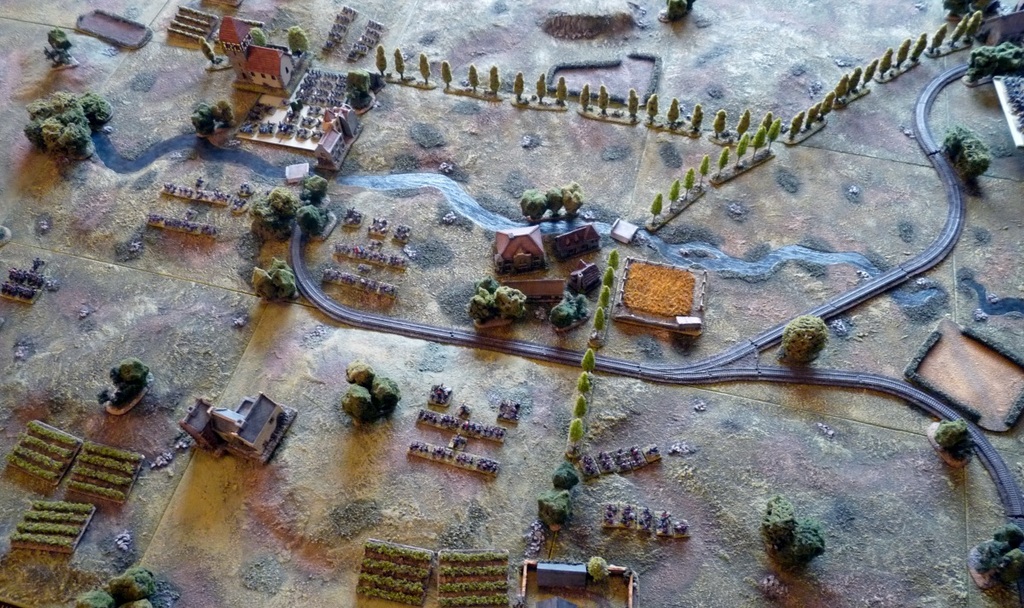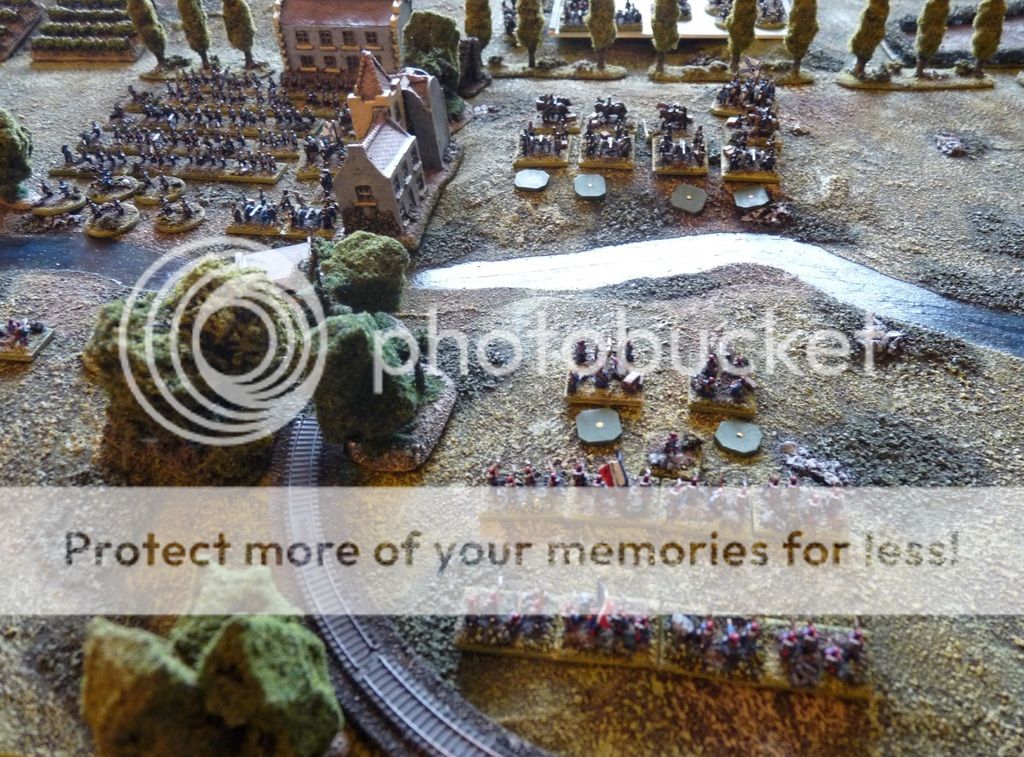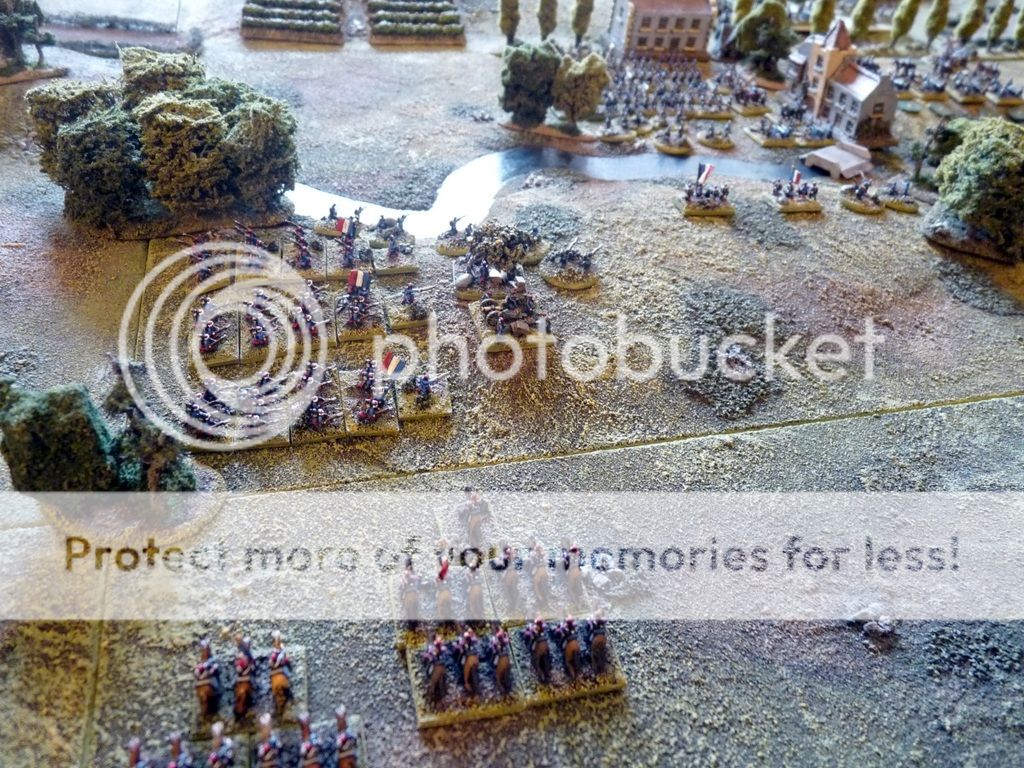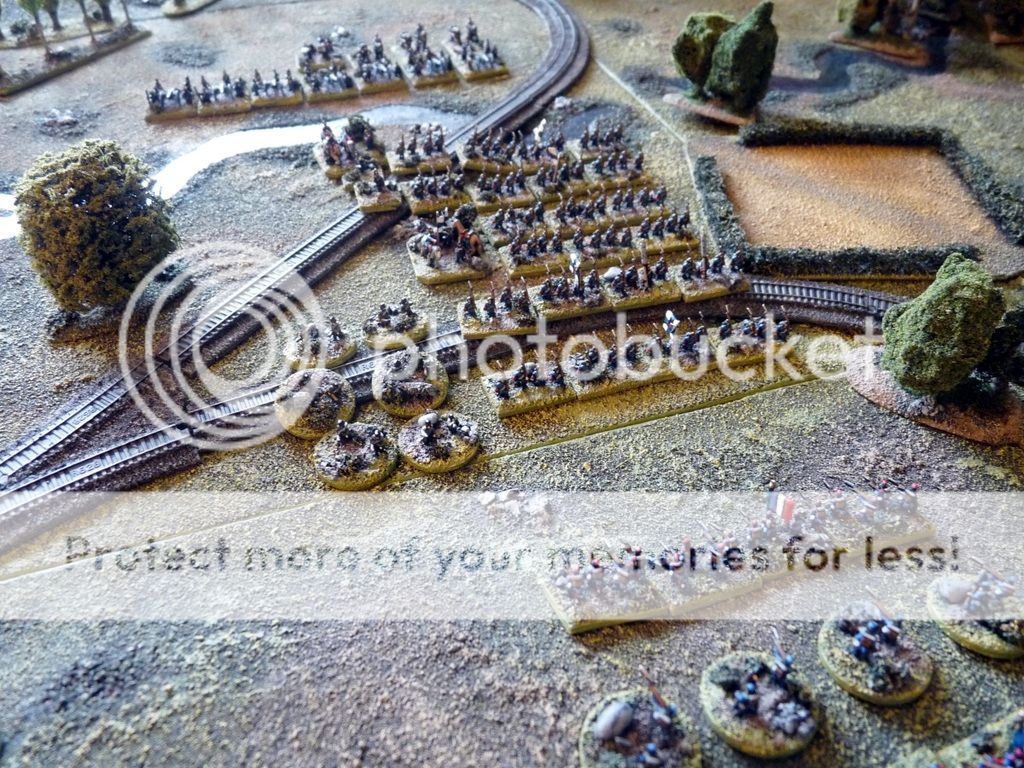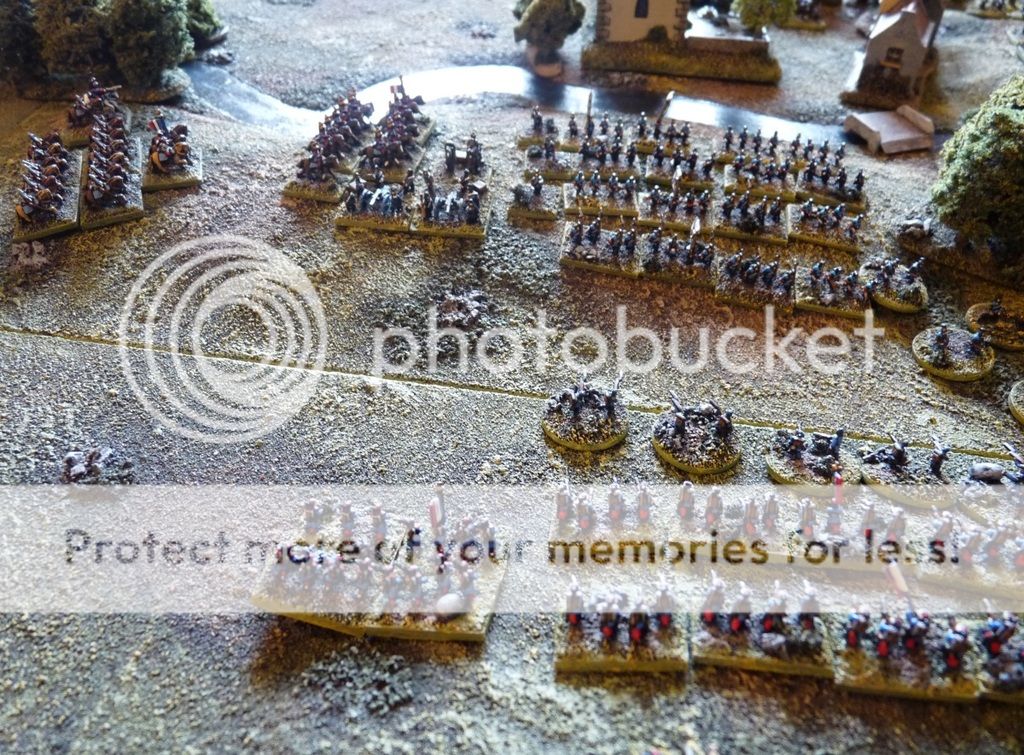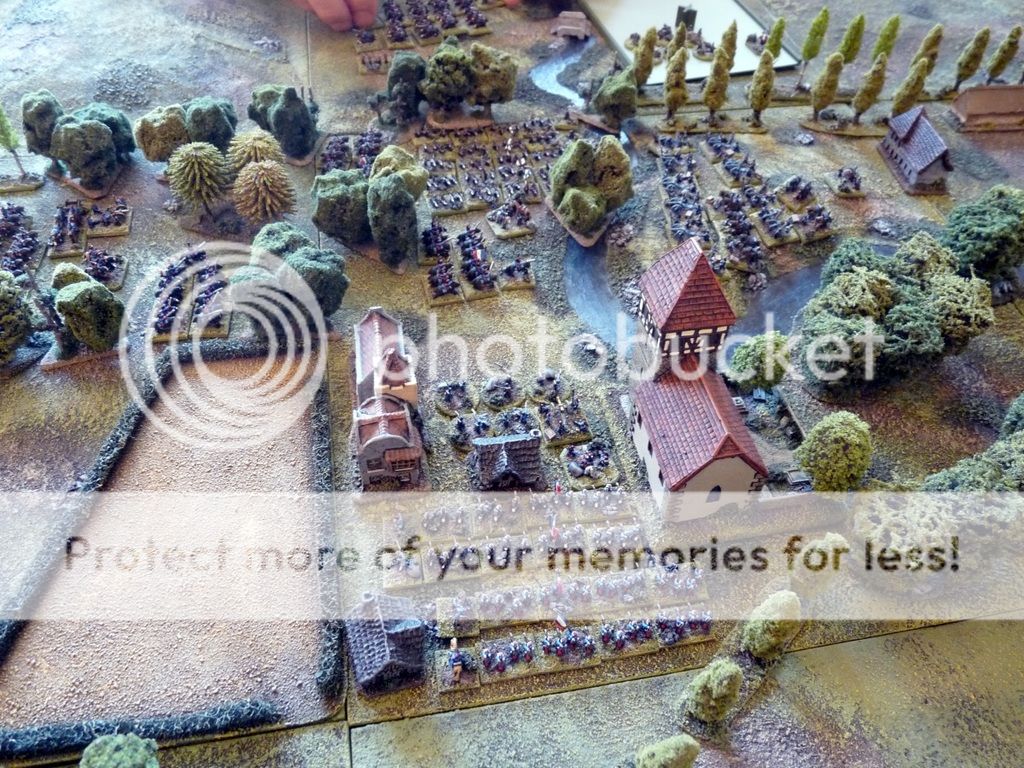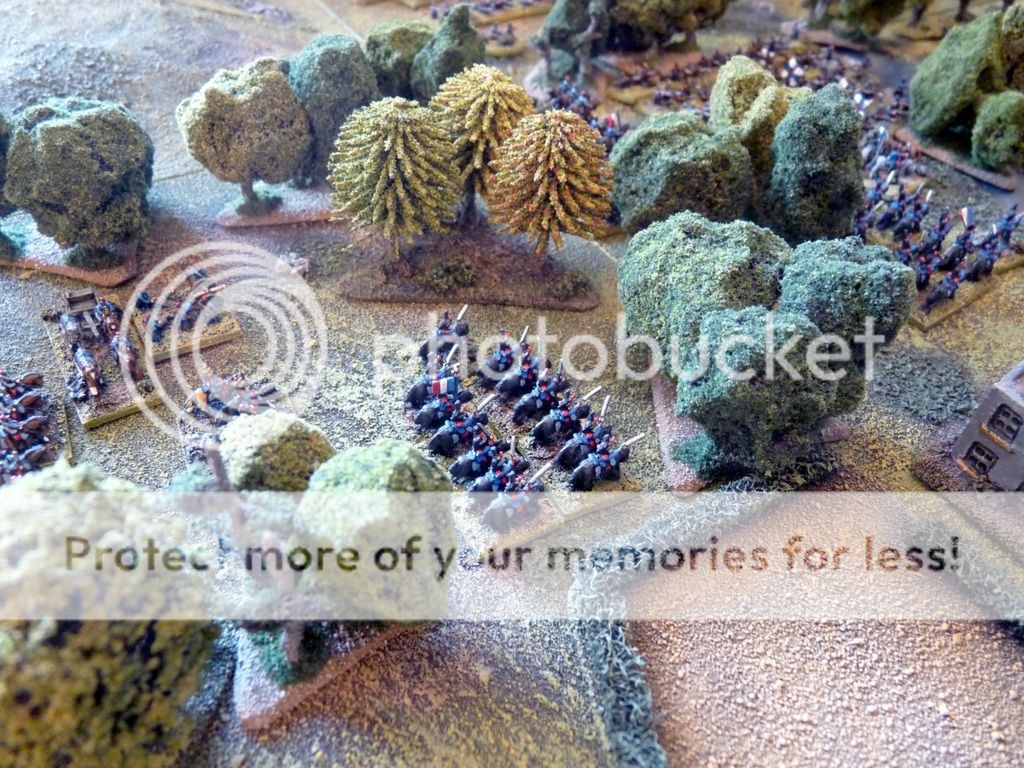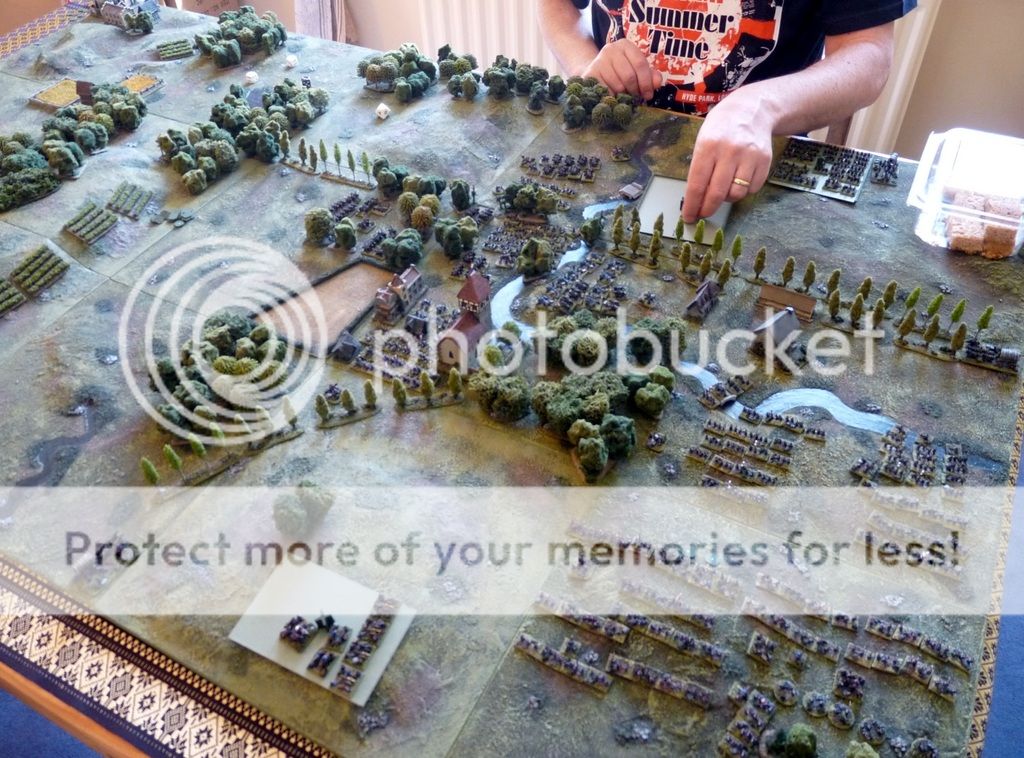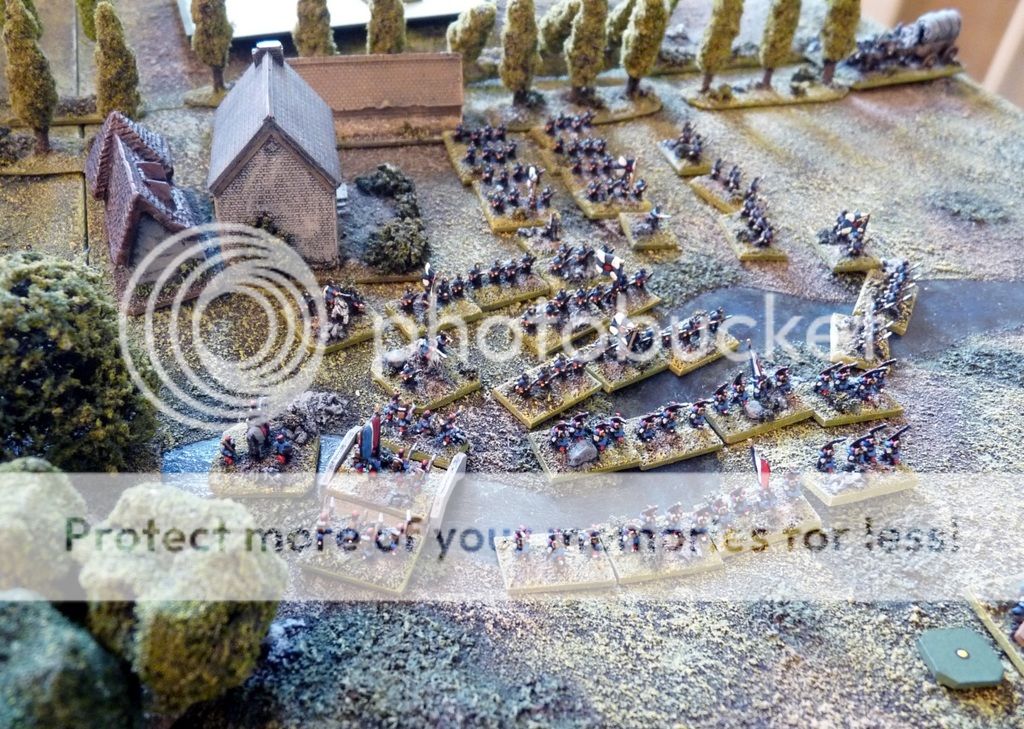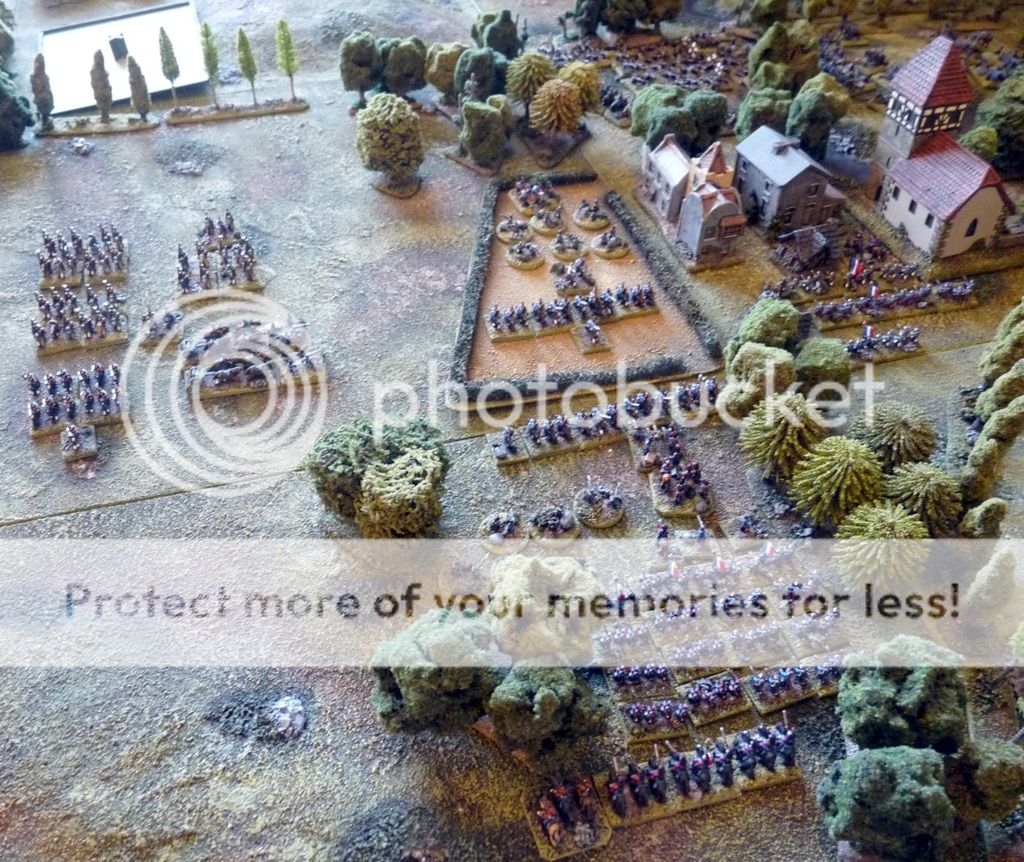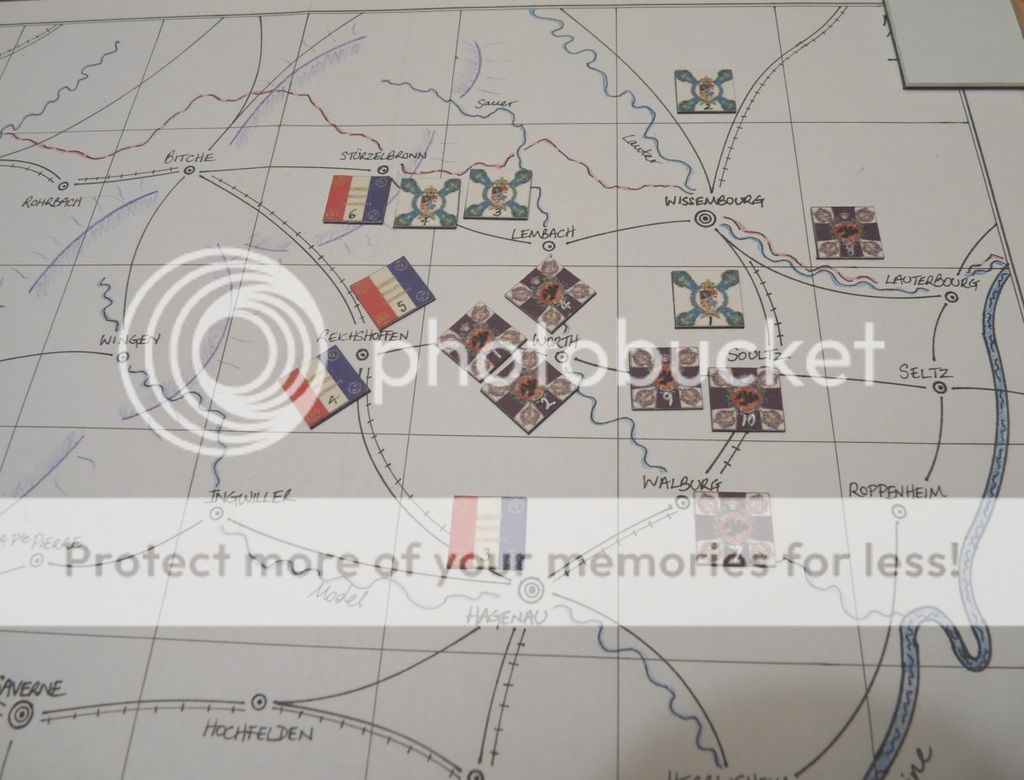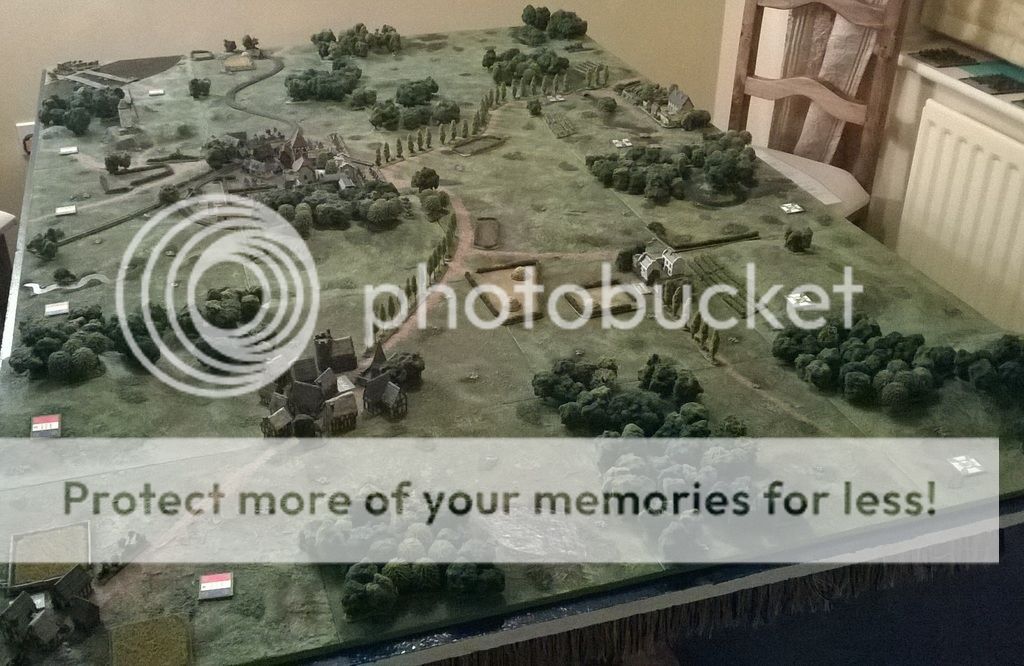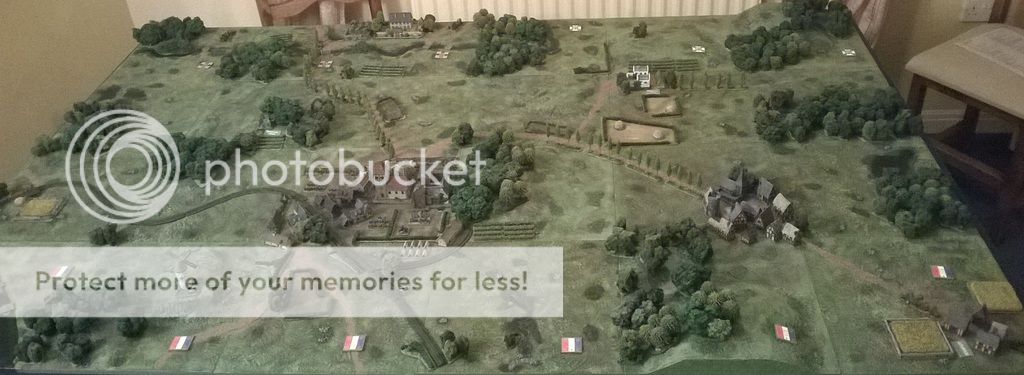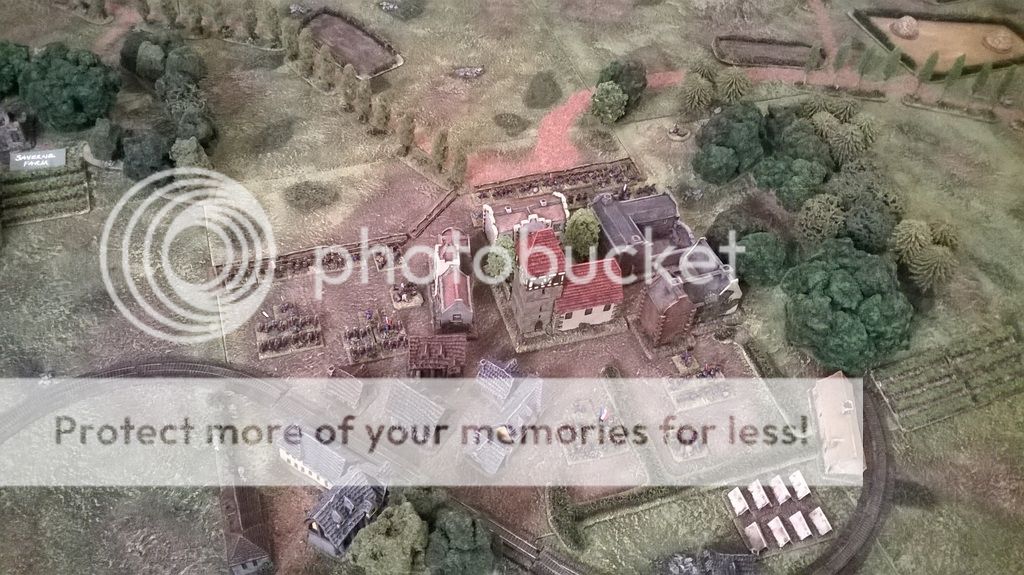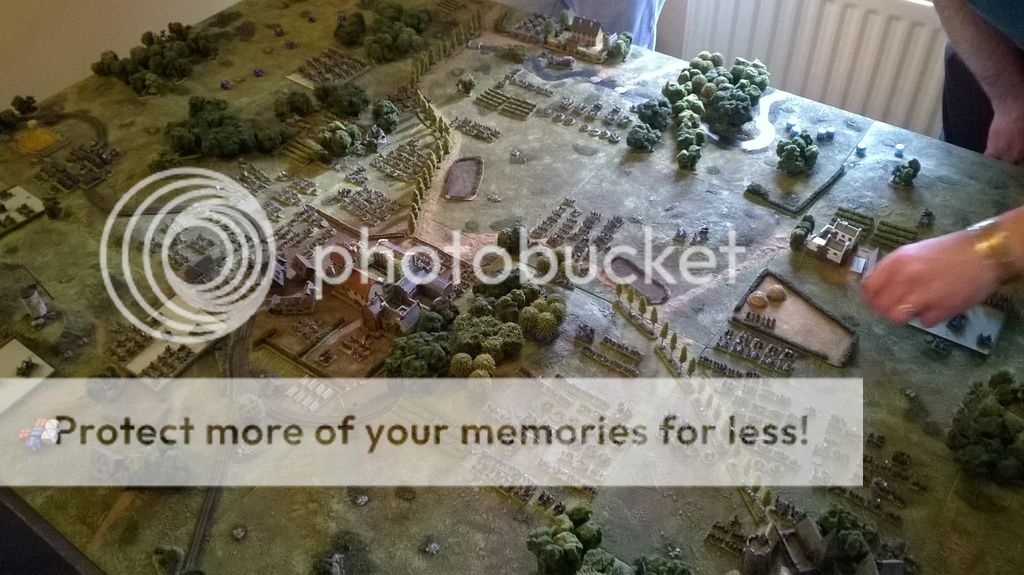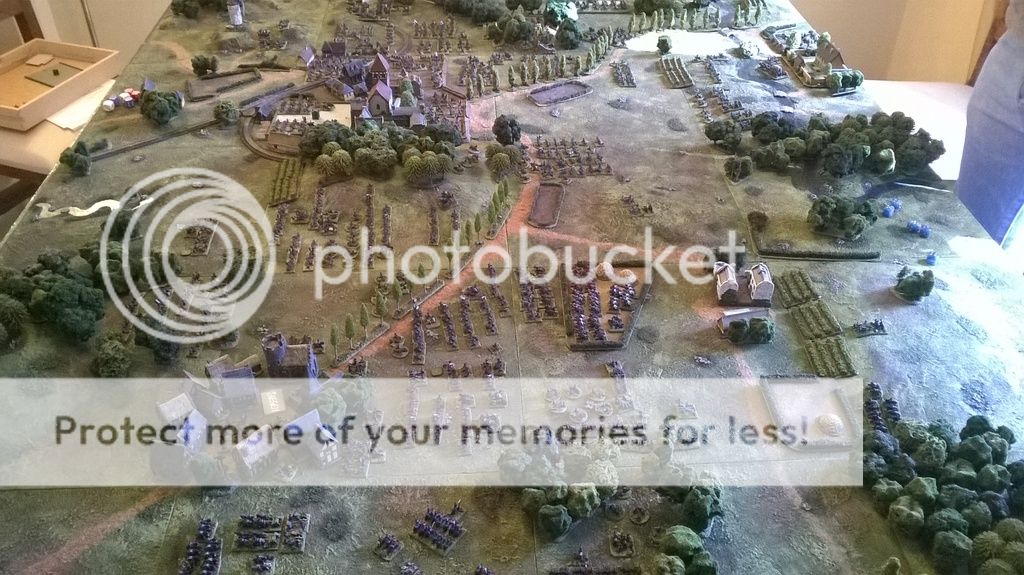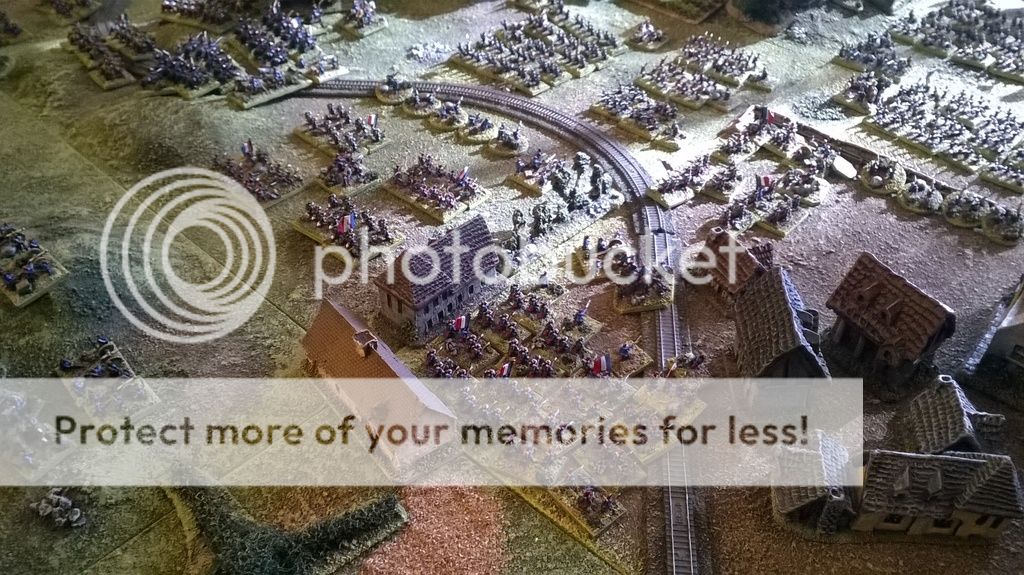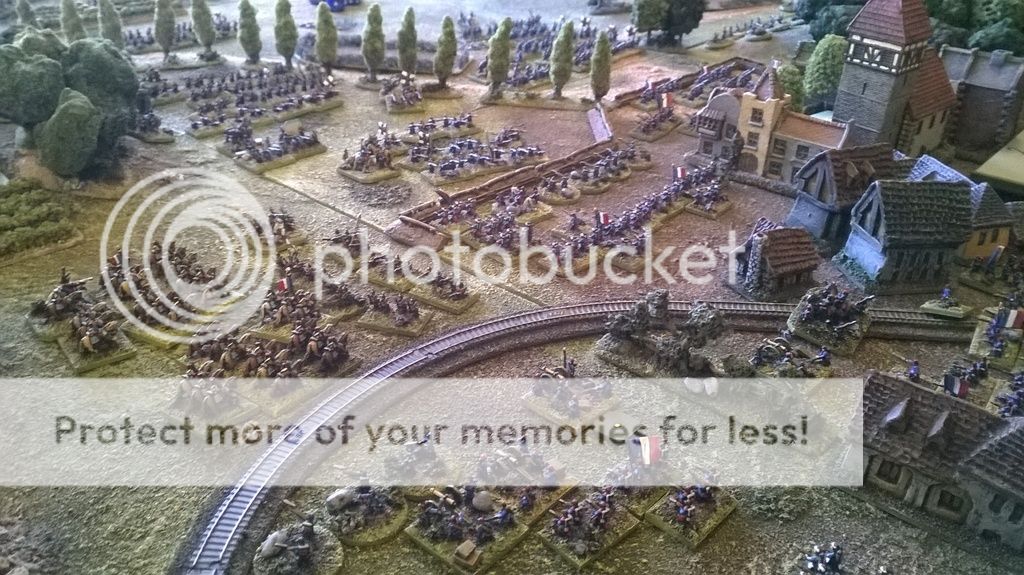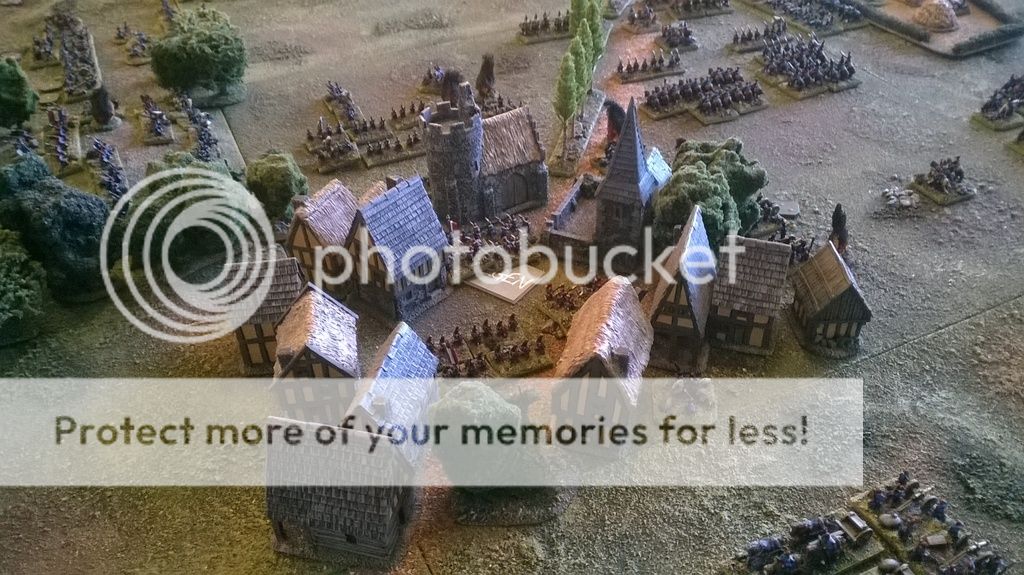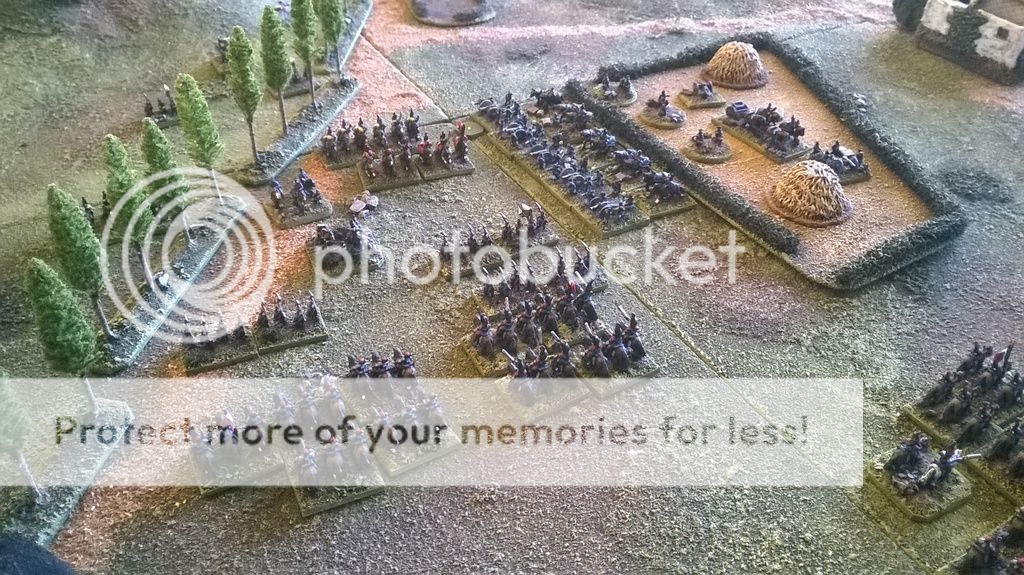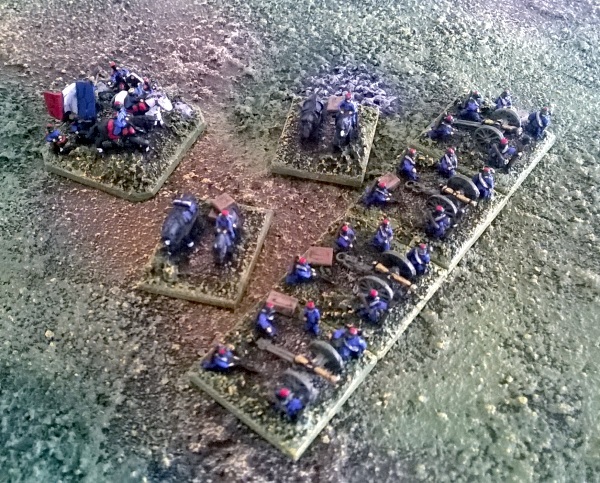Saturday’s game was certainly a dramatic final episode to this short but action-packed campaign. Between us Simon and I deployed armies totalling 140,000 troops and fought out an intense but fun battle on Saturday. It was pretty much a whole-day affair which saw lots of action, manoeuvre, traffic jams and carnage.
Simon had reviewed the map and scenario details beforehand, and pondered the numerous options that were available to him. There were victory points to be collected at the numerous objectives, with the French towns representing Leipzig, Mockern and Lindenau as the main prizes. There were also a lot of French troops to get through (whose exact locations were not known to the Germans) and orders of march/arrival to plan. But plan he did, and within a couple of turns hordes of Prussians and Bavarians were flooding onto the battlefield.
The French artillery open up on the first arrivals:
The movement trays may detract a bit from the aesthetics but they’re a necessity when playing with big armies!
There were options for delayed entry for flank attacks on ‘Mockern’ and ‘Lindenau’, and, as French commander, I was unsure of which if any of these would be taken up – so I had to garrison these potentially key locations, and keep reserves in hand, in case some of the uncommitted German formations made an unwelcome appearance.
French marine battalions in Leipzig covering the vital crossings:
Early actions saw Uhlans pushed wide to feel for the enemy left flank, while the French attempted to hurt the Germans before they could deploy from their lines of march, with massed batteries opening up to some effect. One Prussian cavalry division was forced to duck into a handy wood to avoid further damage, but all too soon the lines of Krupp guns were in place and pounded most of the French batteries to destruction.
Battle is joined:
This bought time for the infantry to begin its steamroller advance. Simon had decided to go for the direct approach and throw the bulk of his strength straight at Leipzig. In response I had to hastily draw in my reserves to stem the tide. Most of my cavalry, 2 out of my 3 divisions, were drawn off to the left to prevent the Prussian cavalry from sweeping around my flank and in behind ‘Lieberwolkerwitz’. Over time the cavalry battle on the major hill there changed from being an expensive draw, to enough of a German success to have some influence the final outcome of the battle.
A French cavalry division heads to the flank, supported by its horse batteries:
A second division follows the first, coming under fire from a pesky Prussian horse battery in the village that proved impossible to eradicate.
More pics of the cavalry action – lots of manoeuvre, charges and counter-charges:
I may have become slightly obsessed with that lone battery….
Meanwhile, the Germans tried to sort out the massed congestion in front of Leipzig, the French launched spoiling attacks into their flank to slow them down, and the massed Prussian/Bavarian artillery hunted for French targets to annihilate.
French spoiling attacks:
A little later on – still making life awkward for the Prussians:
French artillery losing another duel with the Prussian guns:
The game clock ticked on and eventually the final unknown was resolved – The Baden/Wurttemberg division arrived on the other side of the river and began to advance on ‘Lindenau’. Here again the French defended tenaciously, holding up the assault in the woods in front of the town. With the last German arrival points now declared, the French drew in every available unit to hold the line, some crossing the river to reinforce Lindenau as the pressure built.
The attack on Lindenau develops in the foreground:
Massed artillery softens up the defences ahead of the final assault:
Brave Chasseurs wiped out as the outer defences fall:
Both sides were taking heavy casualties and generals were falling like nine-pins – including the commander of VII French Corps. Eventually the German infantry came forward to storm the suburbs of Leipzig; Prussians and Bavarians shoulder to shoulder, faced by French sailors, marines and zouaves.
The general scene as the battle reaches its climax (it must be dusk!):
Sneaky Bavarian artillery fires across the river into French reserves in Lindenau (I may have put this idea in Simon’s head – not a smart move):
The first attacks were repulsed with heavy losses, but eventually the pressure across the whole field told and the French army’s morale hit its breaking point, both Corps failing at the same time, and the battle was over. The Germans had achieved a decent haul of victory points, and given more time would have take their main objective and the river crossing, but in the end they had won the battle through hard fighting.
Some French units would get away along the main line of communication from Lindenau, and others would retreat into the Vosges passes, but many thousands would be captured, along with much of the army’s equipment and baggage. The Army of Alsace was destroyed as a fighting force and would not re-join the main Imperial army to the west.
Overall we fought 5 battles in our campaign, and it was excellent from start to finish. Thanks to Simon for getting thoroughly stuck in, hopefully we can have another go in the future, perhaps Italy 1859 next time?

